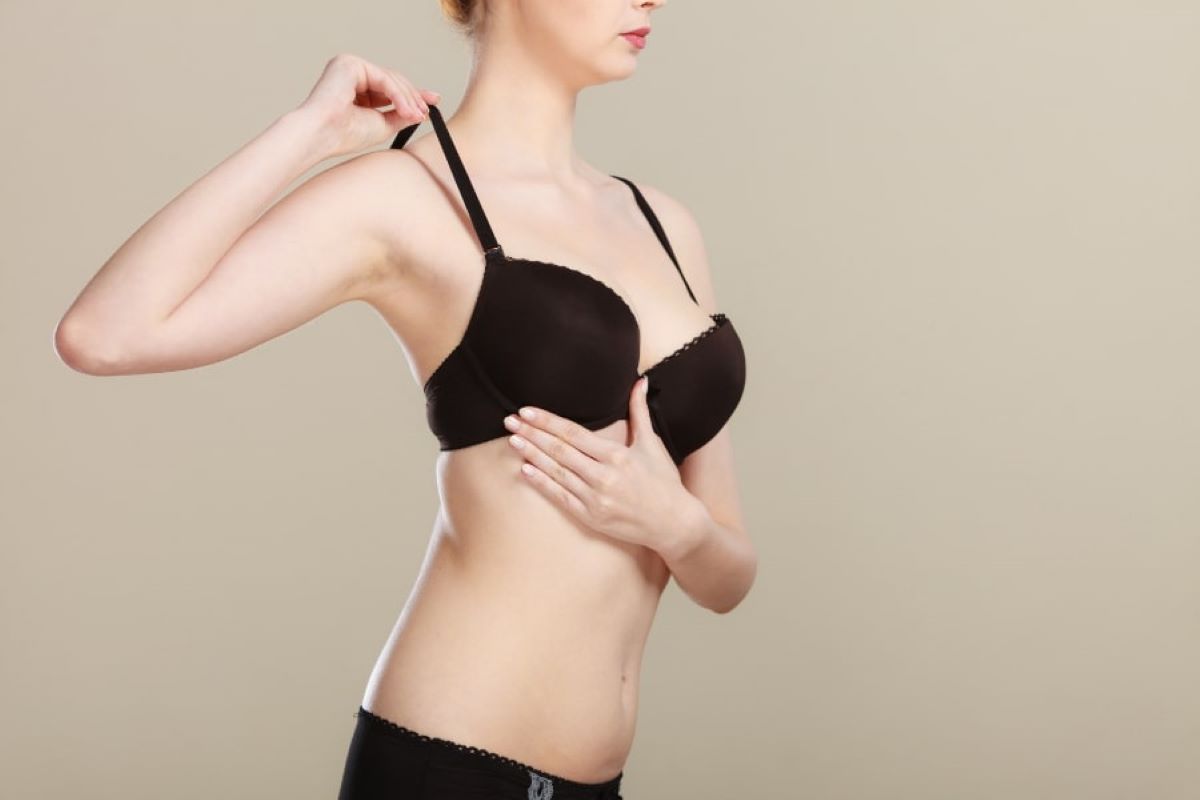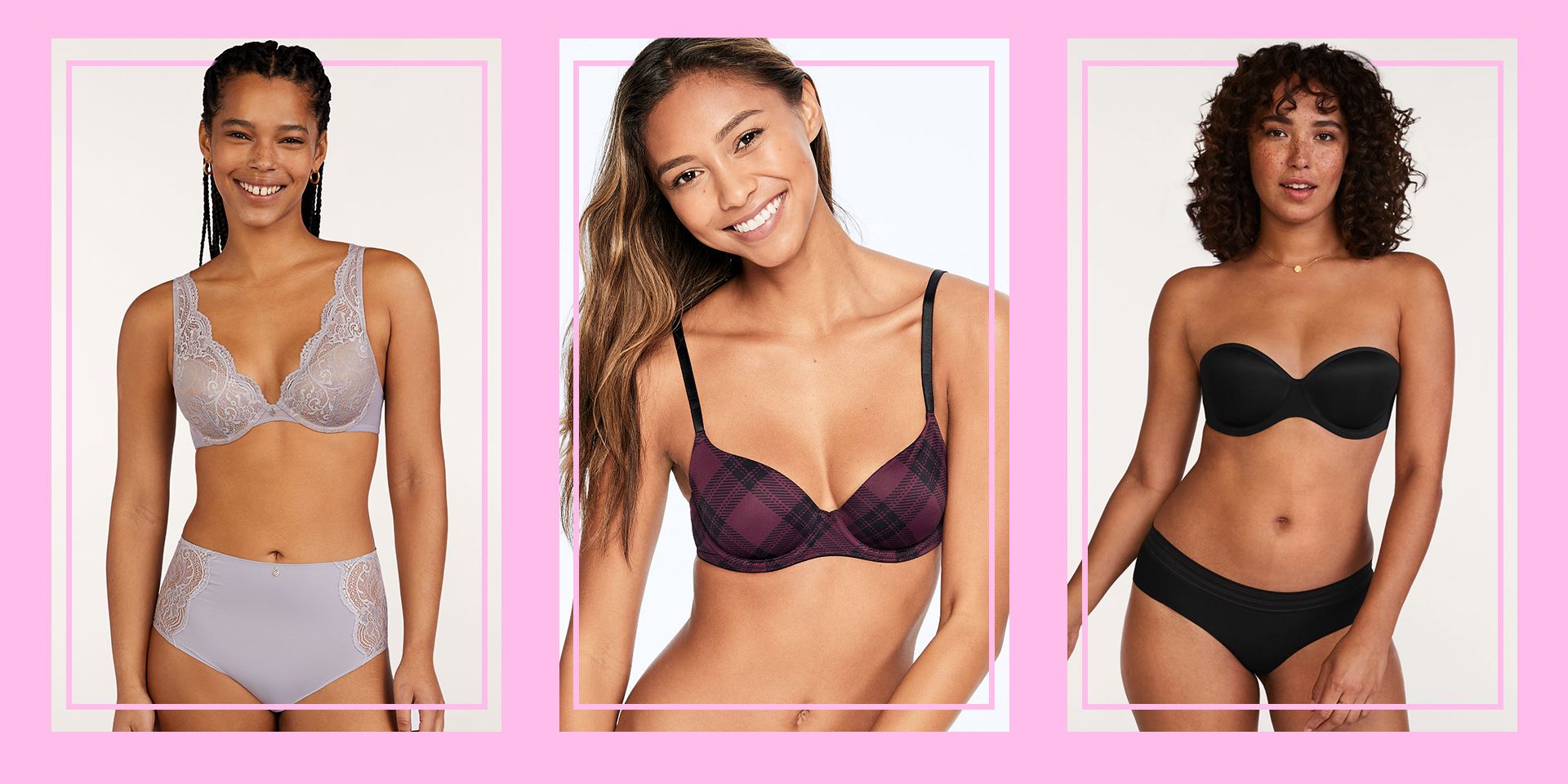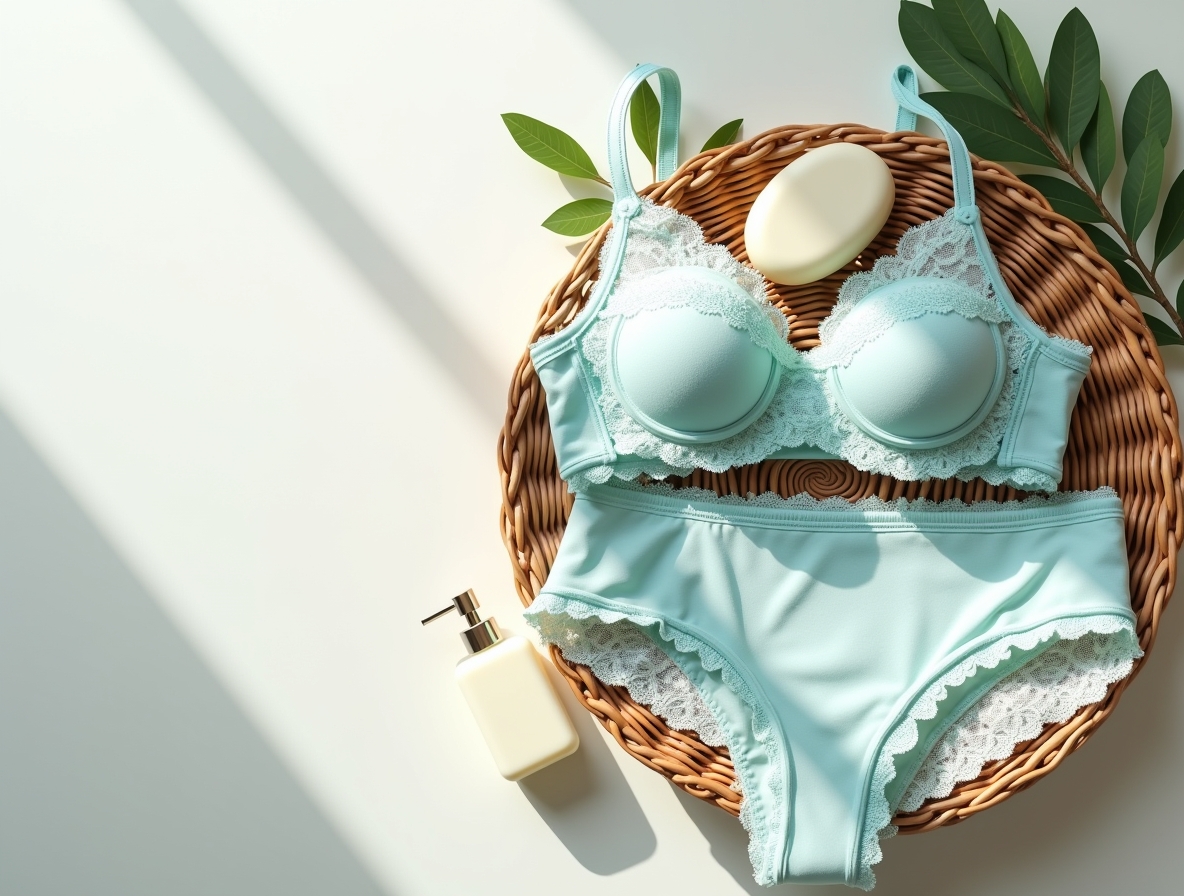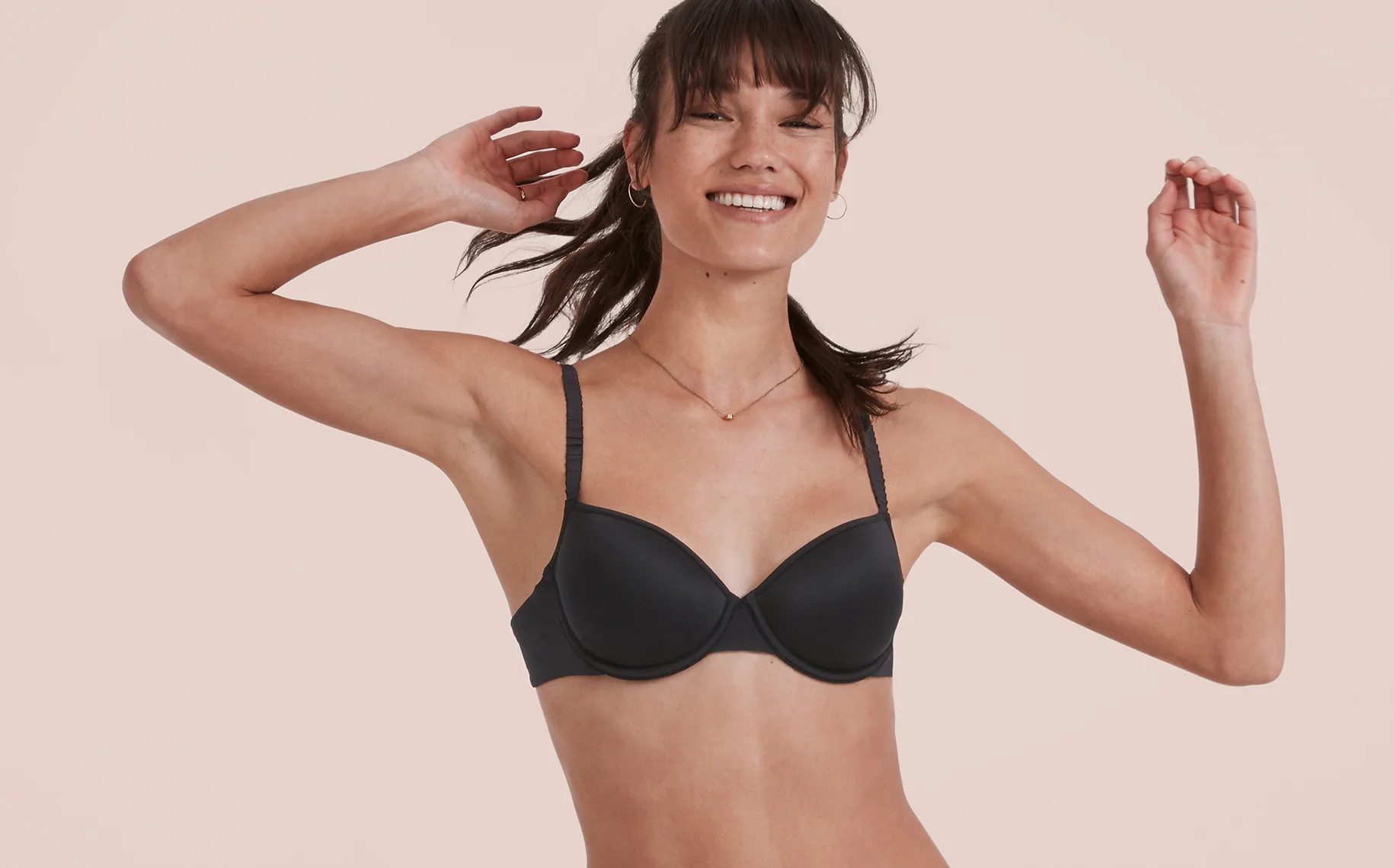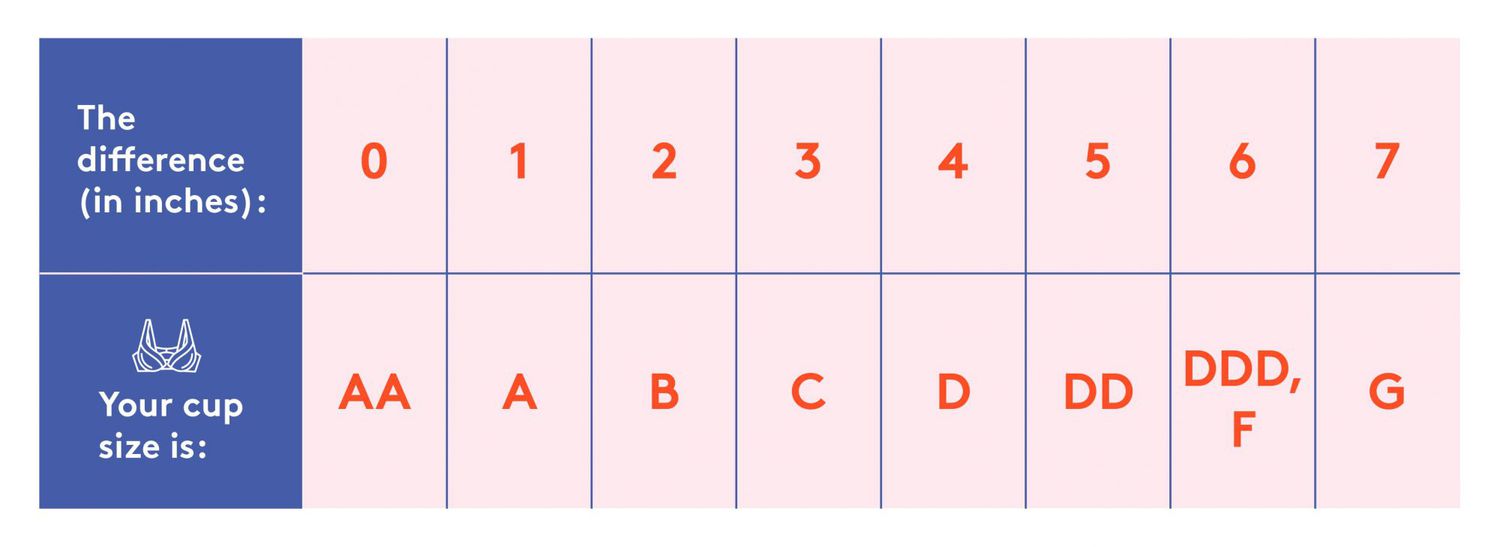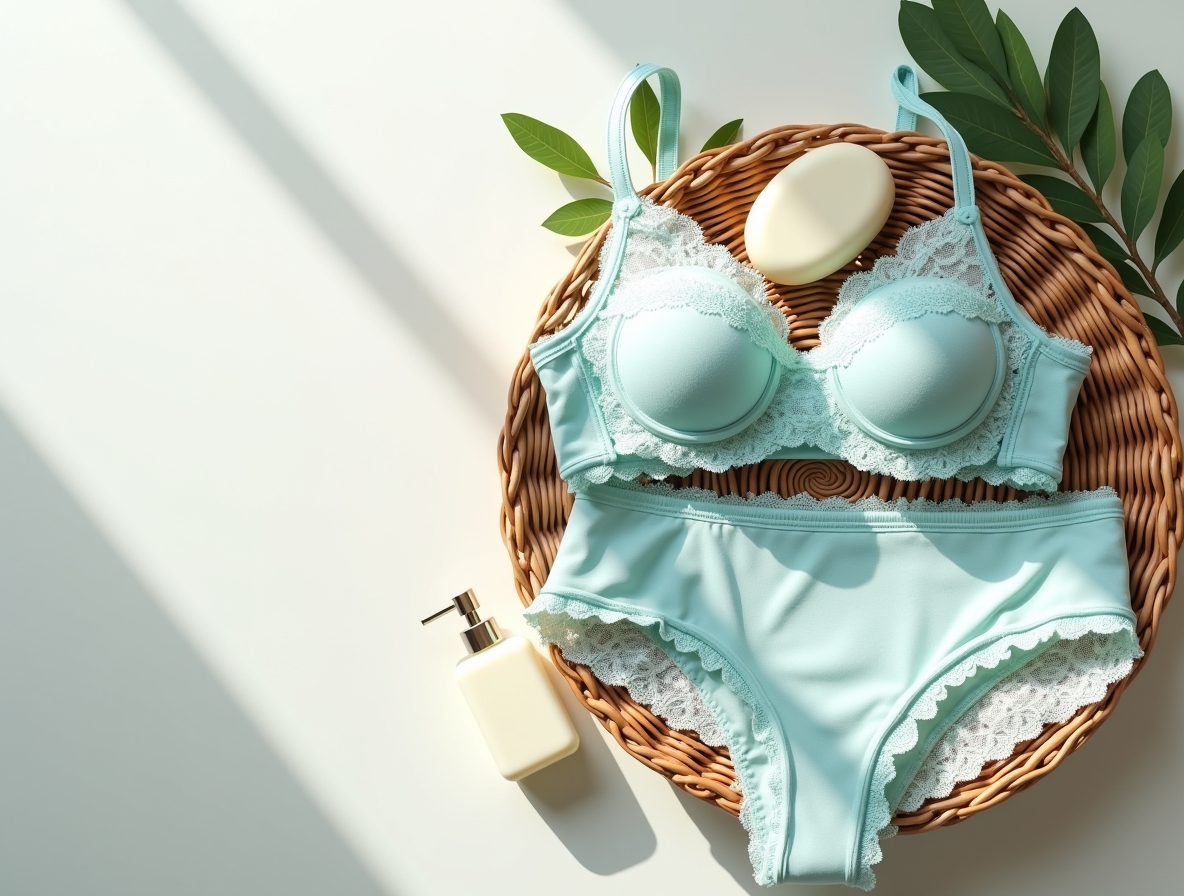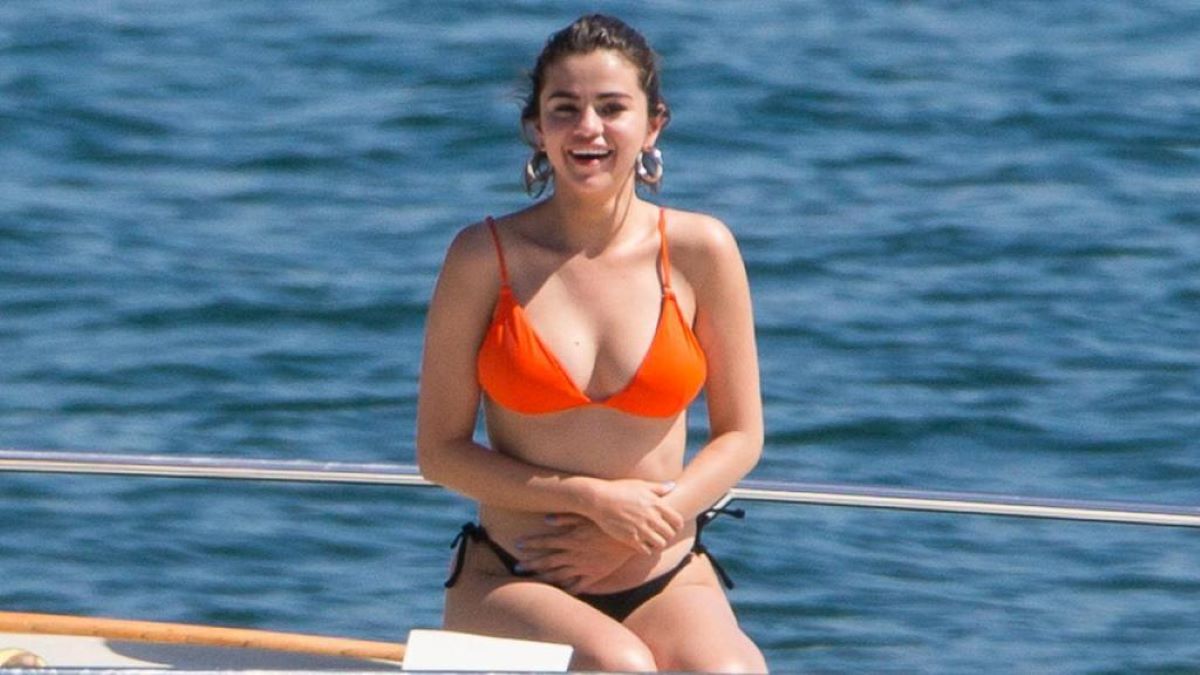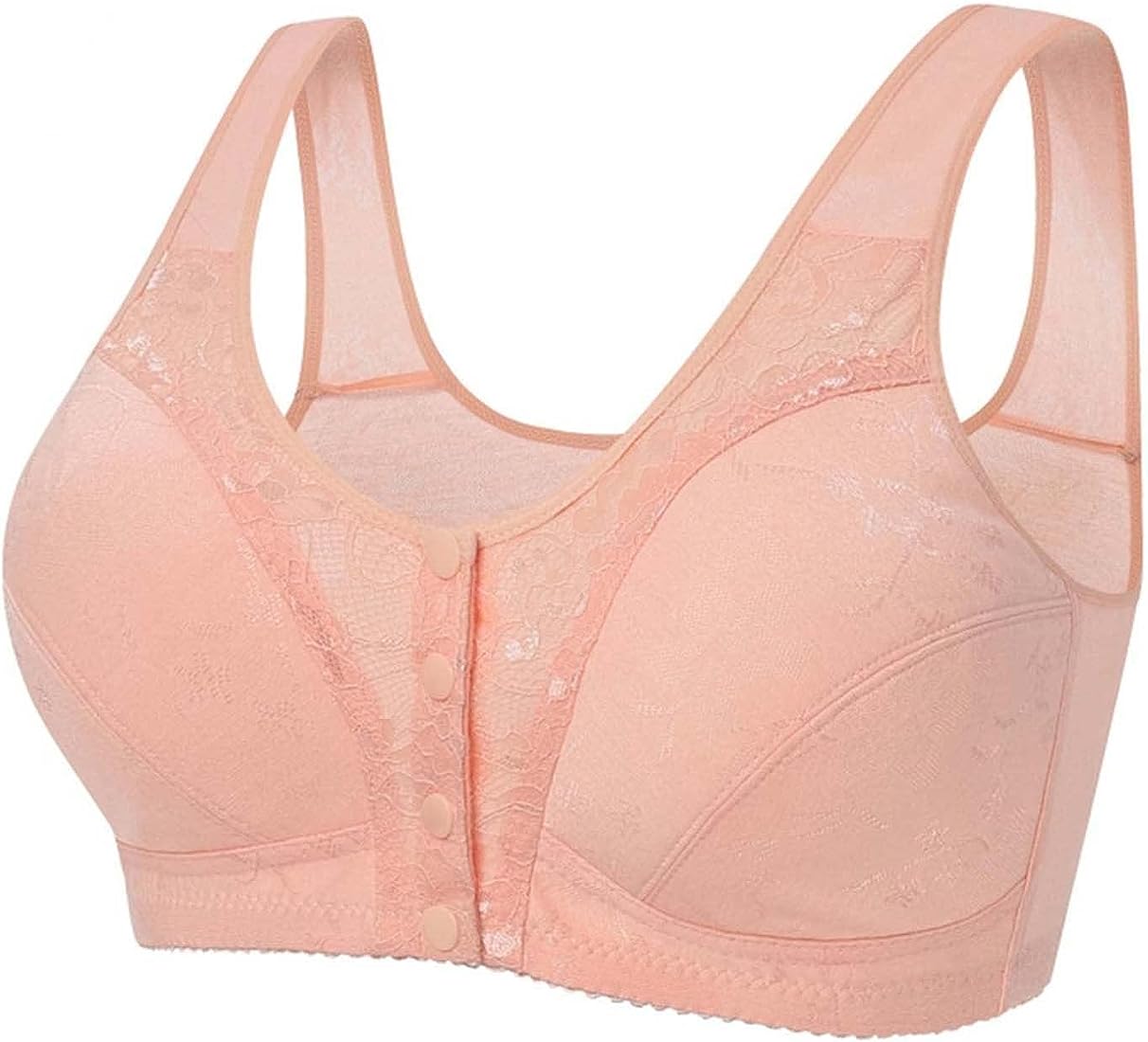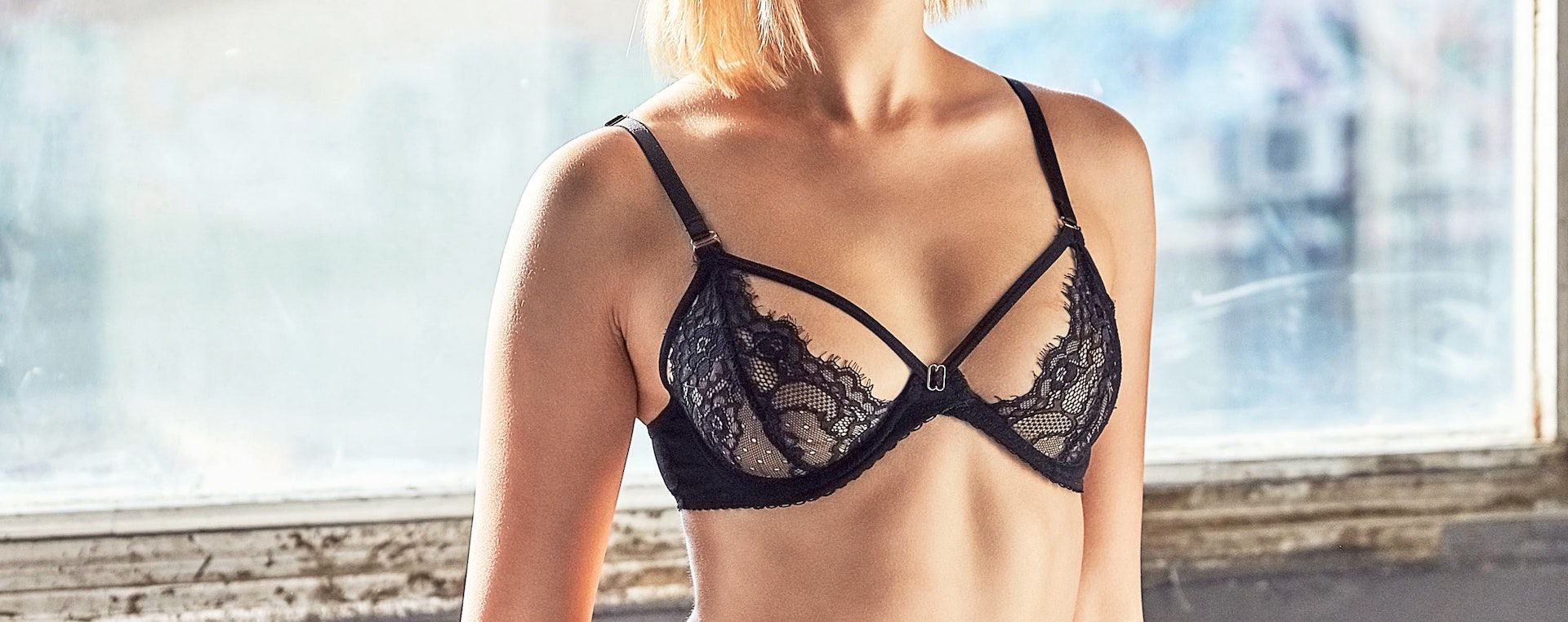Home>How-to Guides>For Women>How To Know What Size Bra You Are
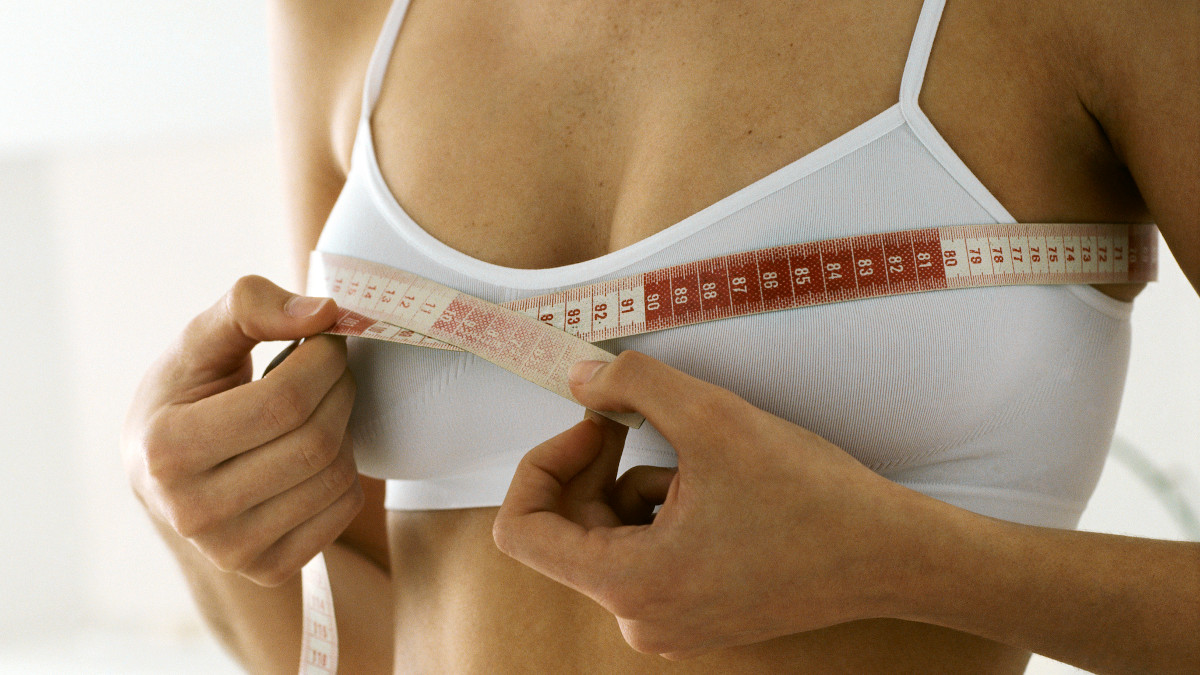

For Women
How To Know What Size Bra You Are
Modified: September 23, 2023
Discover how to determine your correct bra size with this comprehensive guide for women. Learn the essential steps to finding the perfect fit and achieve utmost comfort.
(Many of the links in this article redirect to a specific reviewed product. Your purchase of these products through affiliate links helps to generate commission for Under-tec.com, at no extra cost. Learn more)
Table of Contents
Introduction
Welcome to the world of bras, where finding the perfect fit can sometimes feel like solving a complex puzzle. As women, we understand the importance of wearing a comfortable bra that provides proper support, enhances our natural shape, and boosts our confidence. However, many of us struggle to determine our correct bra size, often compromising on ill-fitting bras that can lead to discomfort, pain, and even long-term health issues.
Did you know that surveys suggest that around 80% of women wear the wrong bra size? The truth is, finding the right size and style of bra can make all the difference in how you look and feel. A well-fitted bra not only enhances your silhouette but also provides essential support to your breasts, reducing strain on the back and shoulders.
When it comes to choosing the right bra size, there are a few factors to consider. Factors such as body shape, breast shape, and personal preferences all play a role in determining the perfect fit. Additionally, understanding the different measurements involved in bra sizing can be quite confusing for many. But fear not – armed with some essential knowledge and a few simple measurement techniques, you’ll be on your way to finding your ideal bra size in no time.
This comprehensive guide will take you through the steps of measuring your band size, determining your cup size, decoding bra size labels, and avoiding common mistakes. We’ll also discuss the signs of a poorly fitted bra, as well as provide valuable tips for finding the right bra size and maintaining it over time.
So, whether you’re a new bra shopper or someone looking to upgrade your current collection, read on to discover the secrets behind finding your perfect fit.
Importance of Wearing the Right Size Bra
Wearing the right size bra is not just about comfort and aesthetics – it’s also about your overall health and well-being. A poorly fitted bra can have serious consequences, causing discomfort, pain, and even long-term damage to your breasts and posture.
One of the primary reasons to wear the right size bra is for proper support. Breasts are made up of delicate and sensitive tissue, and without the right support, they may experience unnecessary strain. A bra that is too tight can dig into the skin, causing redness, marks, and irritation, while a bra that is too loose fails to provide the necessary support, leading to sagging breasts and potential discomfort.
In addition to support, the right size bra can enhance your natural shape and boost your confidence. A properly fitting bra lifts and shapes your breasts, improving your overall appearance. When your clothes fit better, you feel more confident and comfortable in your own skin.
Furthermore, wearing the right size bra can help promote better posture. A well-fitted bra provides support to your breasts, which in turn helps to align your spine and shoulders in a proper position. This can alleviate strain on your back and neck, reducing the risk of pain and discomfort.
Aside from physical benefits, choosing the correct bra size can also have a positive impact on your mental well-being. Wearing a bra that fits properly can boost self-esteem and body confidence, allowing you to feel comfortable and empowered throughout the day.
It’s important to note that your bra size may change over time due to factors such as weight fluctuation, pregnancy, or natural changes in breast shape. Regularly assessing and updating your bra size ensures that you continue to enjoy the benefits of a well-fitted bra.
In the following sections, we will explore the factors to consider when determining your bra size, as well as provide step-by-step instructions on how to measure your band size and cup size accurately. By understanding the importance of wearing the right size bra and learning how to find your perfect fit, you will be on your way to a more comfortable, confident, and healthier you.
Factors to Consider
When it comes to finding the right bra size, there are several factors to consider. Taking these factors into account will help ensure that you choose a bra that not only fits well but also complements your body shape and personal preferences. Let’s explore some of these key factors:
- Body Shape: Your body shape plays a significant role in determining the style and fit of the bra that will work best for you. Different body types may have different bra size needs. For example, if you have a fuller bust, you may require more support, while those with a smaller bust may prefer a bra that enhances their shape.
- Breast Shape: Understanding your breast shape is essential in finding a bra that provides optimal support and comfort. Common breast shapes include round, teardrop, fuller on top, fuller on bottom, and asymmetrical. Each shape may require a different style or cut of bra to accommodate and flatter the breasts.
- Personal Preferences: Everyone has individual preferences when it comes to their bra fit and style. Some prefer underwire bras for added support, while others opt for wireless bras for a more relaxed feel. Consider your comfort needs, preferred level of coverage, and the activities you engage in throughout the day when choosing a bra.
- Functionality: Consider the functionality of the bra based on your lifestyle and the activities you typically engage in. For example, if you lead an active lifestyle or participate in sports, you may need a sports bra that offers maximum support and minimizes movement during physical activity.
- Clothing Compatibility: Think about the types of clothing you usually wear and ensure that your bra is compatible with them. Different outfits may require different bra styles, such as strapless bras for shoulder-baring tops or plunge bras for low-cut necklines.
- Seasonal Changes: It’s important to keep in mind that your bra size may vary throughout the year. Factors such as weight fluctuations, hormonal changes, or changes in breast volume due to pregnancy or nursing can affect your bra size. Regularly re-evaluate your size to ensure a proper fit.
By considering these factors, you can make more informed choices when it comes to selecting your bras. Now that we’ve covered the factors to consider, let’s move on to the next section, where we will learn how to measure your band size accurately.
Measuring for Band Size
One of the first steps in finding the right bra size is determining your band size. The band size corresponds to the measurement around your ribcage, just below your bust. Follow these steps to measure your band size accurately:
- Get a measuring tape: Use a soft, flexible measuring tape for accurate measurements. If you don’t have one, you can use a string or ribbon and then measure it with a ruler.
- Stand straight and relaxed: Stand in front of a mirror and ensure your posture is straight but relaxed. This will help you obtain the most accurate measurement.
- Measure just below your bust: Place the measuring tape directly under your bust, making sure it is snug against your skin. Keep the tape level and parallel to the floor for an accurate measurement.
- Take the measurement: Note down the measurement in inches or centimeters, whichever unit of measurement you prefer. This is your band size.
It’s important to remember that bra band sizes are typically even numbers. If you measure an odd number, round up to the nearest even number to find your band size. For example, if your measurement is 31 inches, round up to 32 inches.
Keep in mind that the band should fit snugly around your ribcage, providing support without feeling too tight or constricting. If the band feels uncomfortably tight or leaves marks on your skin, consider trying a larger band size.
Now that you have determined your band size, let’s move on to measuring for cup size, which will give you a more accurate understanding of your complete bra size.
Measuring for Cup Size
Once you have determined your band size, the next step is to measure for your cup size. The cup size corresponds to the difference between your band size and the measurement around the fullest part of your bust. Follow these steps to measure your cup size accurately:
- Stand straight and relaxed: Stand in front of a mirror with your shoulders relaxed and your arms at your sides. This posture will help ensure an accurate measurement.
- Wrap the measuring tape around the fullest part of your bust: Place the measuring tape around your chest, making sure it passes over the nipples and around the fullest part of your breasts. Make sure the tape is level and not too tight or too loose.
- Take the measurement: Note down the measurement in inches or centimeters, whichever unit of measurement you prefer.
Once you have your bust measurement, subtract your band size from it. The difference will determine your cup size. Use the following guide to find your cup size:
- If the difference is 1 inch (or about 2.5 centimeters), your cup size is A.
- If the difference is 2 inches (or about 5 centimeters), your cup size is B.
- If the difference is 3 inches (or about 7.5 centimeters), your cup size is C.
- If the difference is 4 inches (or about 10 centimeters), your cup size is D.
- If the difference is 5 inches (or about 12.5 centimeters), your cup size is DD (or E).
Keep in mind that cup sizes can vary slightly between brands, so it’s essential to try on different styles and sizes to find the most comfortable and flattering fit.
Now that you have measured your band size and cup size, you can combine them to determine your complete bra size. For example, if your band size is 34 inches and your cup size is B, your bra size would be 34B.
In the next section, we will decode bra sizes and explore common mistakes to avoid when determining your bra size.
Decoding Bra Sizes
Understanding bra sizes can sometimes feel like deciphering a secret code. The combination of band size and cup size creates the unique identifier for each bra size. Let’s decode the different components of bra sizes:
The band size is represented by a number, such as 32, 34, or 36. This number corresponds to the measurement around your ribcage, just below your bust. Remember that band sizes are typically even numbers, so if you measure an odd number, round up to the nearest even number.
The cup size is represented by a letter, such as A, B, C, or D. The cup size is determined by the difference between your band size and the measurement around the fullest part of your bust. Each increase in cup size represents an additional inch in difference.
It’s important to note that cup sizes are consistent relative to band size. This means that a 34B bra will have a larger cup volume than a 32B bra, even though they share the same letter. Similarly, a 34C bra will have a larger cup volume than a 34B bra.
Here is a general guide to help you understand cup sizes:
- A cup: The difference between your band size and bust measurement is approximately 1 inch.
- B cup: The difference between your band size and bust measurement is approximately 2 inches.
- C cup: The difference between your band size and bust measurement is approximately 3 inches.
- D cup: The difference between your band size and bust measurement is approximately 4 inches.
- DD cup (or E cup): The difference between your band size and bust measurement is approximately 5 inches.
Remember that these are general guidelines, and cup sizes can vary slightly between brands. It’s important to try on different bra styles and sizes to find the most comfortable and flattering fit for your unique body shape.
Now that you know how bra sizes are decoded, let’s move on to the next section, where we will discuss common mistakes to avoid when determining your bra size.
Common Bra Size Mistakes
When it comes to determining our bra size, many of us make common mistakes that can lead to ill-fitting bras and discomfort. Avoiding these mistakes will help ensure that you find a bra that provides the perfect combination of support, comfort, and style. Let’s take a look at some of the most common bra size mistakes:
- Not measuring regularly: Your body can change over time due to factors such as weight fluctuations, pregnancy, or hormonal changes. Failing to measure yourself regularly can result in wearing bras that are no longer the right fit for you.
- Not considering different bra styles: Different bra styles are designed to fit and support your breasts in varying ways. Don’t limit yourself to just one style – explore options such as balconette, plunge, or sports bras to find the styles that work best for your body shape and personal preferences.
- Ignoring the band size: The band provides the majority of the support in a bra. Wearing a band that is too loose can result in a lack of support, while one that is too tight can feel uncomfortable and restrict movement. Pay attention to your band size and make sure it fits snugly but comfortably around your ribcage.
- Overlooking cup size: Neglecting to properly assess your cup size can result in breasts overflowing or not being fully supported. Remember that cup size is relative to band size, so as your band size changes, your cup size may need to be adjusted as well.
- Not adjusting for breast asymmetry: Many women have some degree of breast asymmetry, where one breast is slightly larger or shaped differently than the other. It’s important to fit the bra to the larger breast and use features like adjustable straps or removable inserts to accommodate any differences.
- Using outdated sizing systems: Different brands may use slightly different sizing systems, so it’s important to try on bras and pay attention to how they fit rather than relying solely on the size label. Don’t get too attached to a specific size and be open to trying different sizes in different brands.
Avoiding these common bra size mistakes will help you find bras that fit well, provide proper support, and enhance your comfort. Now that we’ve explored these mistakes, let’s move on to the next section, where we will discuss the signs of a poorly fitted bra.
Signs of a Poorly Fitted Bra
Wearing a poorly fitted bra can lead to discomfort, pain, and a lack of proper support. It’s essential to recognize the signs that indicate your current bra may not be the right fit for you. Here are some common signs of a poorly fitted bra:
- Straps digging into the shoulders: If the bra straps are digging into your shoulders, it could be a sign that the band is too loose and not providing enough support. This can also cause shoulder and neck pain.
- Band riding up: If the band of your bra is riding up your back, it is an indication that the band is too loose. A properly fitting band should sit horizontally across your back and provide adequate support.
- Breasts overflowing or spilling out: If your breasts are spilling out of the cups or appear to be overflowing, it suggests that the cup size is too small. Your breasts should fit comfortably within the cups without any excess spillage.
- Gaps between the bra and breasts: If there are gaps between your breasts and the bra cups, it means the cups are too big. The cups should encase your breasts fully and provide a smooth, seamless fit.
- Underwire digging into the skin: The underwire of your bra should rest comfortably against your ribcage and not dig into your skin. If the underwire is poking or causing discomfort, it could be a sign of an ill-fitting bra.
- Back bulges or rolls: Bulges or rolls of skin around the back area indicate that the band is too tight. A properly fitting bra should provide a smooth and seamless line around your back.
- Lack of support: If your breasts feel unsupported, sagging, or lacking shape while wearing a bra, it may be a sign that the bra is not providing the necessary support.
If you notice any of these signs, it’s time to reassess your bra size and find a better-fitting option. Remember that a well-fitted bra should provide support, comfort, and enhance your natural shape.
In the next section, we will provide valuable tips for finding the right bra size that suits your individual needs and preferences.
Tips for Finding the Right Bra Size
When it comes to finding the right bra size, it’s important to take the time to measure properly, try on different styles, and consider your individual preferences. Here are some valuable tips to help you find the perfect fit:
- Get measured regularly: Our bodies can change over time, so it’s essential to measure yourself regularly to ensure you’re wearing the correct bra size. Aim for a bra fitting every six to twelve months.
- Learn how to measure correctly: Follow accurate measurement techniques, such as measuring your band size directly under your bust and your cup size around the fullest part of your bust. Use a soft, flexible measuring tape and stand straight but relaxed for accurate results.
- Try on different styles: Experiment with various bra styles to determine which ones suit your body shape and offer the desired level of support and comfort. Don’t be afraid to try balconette bras, plunge bras, wireless bras, or sports bras to find the styles that work best for you.
- Consider your breast shape: Understanding your breast shape can help you choose bras that provide optimal support and flatter your natural silhouette. Take into account factors such as fullness, asymmetry, projection, and placement when selecting bras.
- Pay attention to how it feels: Make sure the bra feels comfortable when you try it on. The band should provide a snug but not overly tight fit, the cups should fully encase your breasts without any spillage, and the straps should feel supportive without digging into your shoulders.
- Trust your instincts: Don’t solely rely on the label size. If a bra feels too tight or too loose, trust your instincts and try a different size. Remember that sizes can vary between brands, so pay attention to how a bra fits on your body rather than getting hung up on the numerical size.
- Consider professional fittings: If you’re unsure about your bra size or need extra guidance, consider visiting a professional lingerie store for a fitting. Their expert advice can help you navigate the different options and find the perfect fit.
- Take care of your bras: Proper care and maintenance of your bras can help prolong their lifespan and preserve their shape. Follow the manufacturer’s care instructions, hand wash when possible, and avoid machine drying to ensure your bras maintain their form and support.
Remember, finding the right bra size is a journey of self-discovery. Be patient, be open to trying different sizes and styles, and most importantly, prioritize your comfort and confidence. When you find the perfect fit, you’ll not only feel great physically but also boost your body image and overall well-being.
In the final section, we will provide bra size conversion charts to guide you in navigating different sizing systems across brands and regions.
Bra Size Conversion Charts
When shopping for bras, you may come across different sizing systems depending on the brand or where you are located. In order to help you navigate these variations, here are some handy bra size conversion charts:
US to UK Conversion Chart:
| US Size | UK Size |
|---|---|
| 32A | 32A |
| 32B | 32B |
| 32C | 32C |
| 32D | 32D |
| 32DD | 32DD |
EU to UK Conversion Chart:
| EU Size | UK Size |
|---|---|
| 70A | 32A |
| 70B | 32B |
| 70C | 32C |
| 75D | 34D |
| 80E | 36DD |
UK to AU Conversion Chart:
| UK Size | AU Size |
|---|---|
| 32A | 10A |
| 32B | 10B |
| 32C | 10C |
| 34D | 12D |
| 36DD | 14DD |
Keep in mind that these conversion charts are only a general guide, and sizing can vary between brands. It is always recommended to refer to each brand’s specific sizing charts for the most accurate fit.
When shopping internationally or online, it’s a good idea to have an understanding of the different sizing systems and use these conversion charts as a starting point. Remember to also consider factors such as band and cup sizes, as these can vary even within the same size label.
Now armed with this knowledge, you’ll be better equipped to navigate different sizing systems and find the right bra size no matter where you’re shopping!
Conclusion
Choosing and wearing the right size bra is essential for comfort, support, and confidence. Understanding your body shape, measuring accurately, and considering different factors will help you find the perfect fit.
Remember that your bra size can change over time due to factors like weight fluctuations, pregnancy, and aging. Regularly measuring yourself and reassessing your bra size will ensure you’re always wearing the correct size.
By avoiding common bra size mistakes and recognizing the signs of a poorly fitted bra, you can prevent discomfort, pain, and potential health issues. Pay attention to how a bra feels and looks on your body, ensuring that it provides the necessary support and enhances your natural shape.
Exploring different bra styles, considering your breast shape, and trusting your instincts will help you find bras that meet your individual needs and preferences. Don’t be afraid to seek professional fitting assistance and take proper care of your bras to ensure their longevity.
Lastly, keep in mind that bra size conversion charts can be useful when shopping across brands and regions. Use them as a guide, but always refer to each brand’s specific size chart for the most accurate fit.
With these tips and guidelines in mind, you are now equipped to confidently find the right bra size that provides optimal comfort, support, and enhances your natural beauty. Remember, a well-fitted bra can make all the difference in how you look and feel – so embrace your unique body, find the perfect fit, and embrace your newfound confidence!
